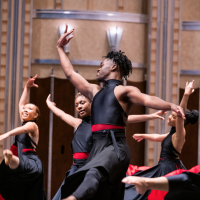Too often I hear from those outside the nonprofit sector complaining that arts organizations are always in trouble because they don’t know how to run things like a business. I would challenge any businessperson to stay in business if:
- Every year you must invent and produce a whole new product line that has not been market-tested (five new plays, operas, exhibitions) with no access to risk or working capital.
- These new products must be planned, designed and paid for up front, long before the public has a chance to see, let alone buy, them. Artist and designer contracts are often signed years in advance. Dancers, actors and musicians must be paid while they rehearse, not just when they perform.
- The products were available for a limited time – maybe only one day or one weekend – and the consumer had to show up at a narrowly designated time and place in order to receive them (your ticket is for admission at 8 p.m. next Thursday only).
- The cost of the product exceeded the market’s ability to pay for it. Ticket prices can’t cover even one-third the actual cost of the performance, let alone help support the organizational structure needed to produce the work.
- The majority of your potential customers have never been introduced to what your business produces (how much arts education did you have in school?)
But arts organizations do it, year after year. The best ones are far more entrepreneurial than many well-capitalized commercial businesses. That’s why the operating support funding that comes from the recently passed Issue 18 is so important. It supports the organizational infrastructure of our arts community, providing at least a little cover for the necessary risk-taking that is the mission of the arts – whose job it is, after all, to push the envelope on human thought and experience, “hold the mirror up to (our) nature(s)” and inspire us to be better than we are.

Well said, Kathleen. Is there such a thing as a nonprofit MBA? Because I think it would benefit our arts organizations to have leaders specifically trained to run them.
Bob, thank you for your comment. In an effort to remedy the lack of business training for (in particular) mid-sized arts orfganizations, the Cleveland Foundation conducted two multi-year capacity-building programs between 1998 and 2006. We brought National Arts Strategies to Cleveland -one of the best professional development consulting groups for the arts in the country. We also sponsored their two-day executive seminar programs for the whole arts community and sent a dozen arts leaders to a summer intensive program at the Stanford Graduate School of Business. In all, more than 50 arts organizations had the advantage of high level business training, custom designed for the arts, in the past decade.